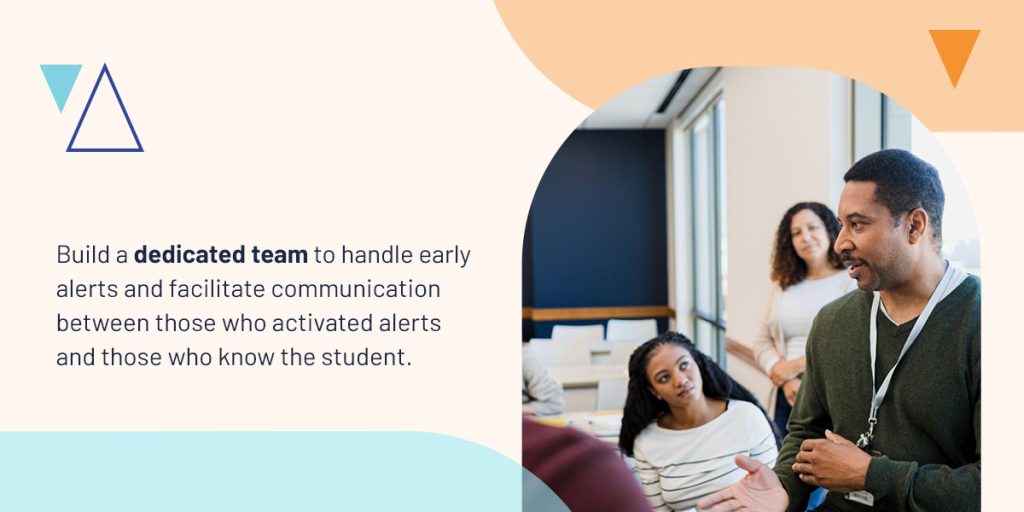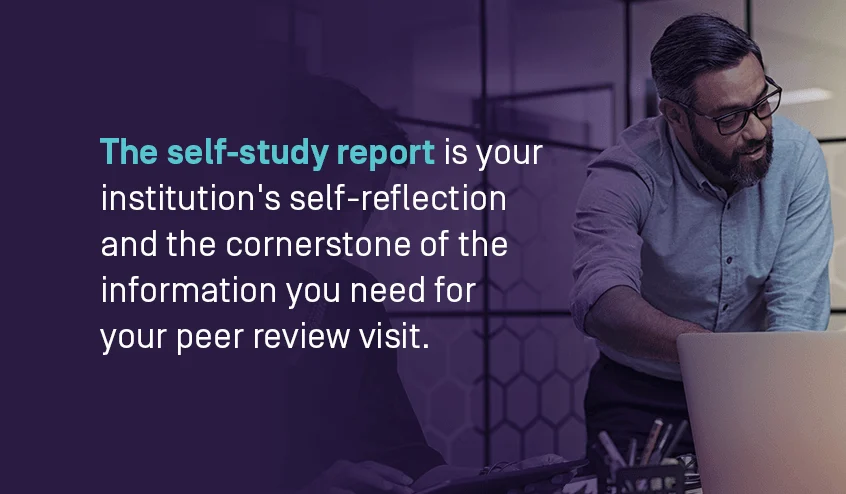
In technical education, it is crucial to identify at-risk students early and help them get back on track to ensure they finish their course. Data-driven early warning systems enable higher education institutions to identify them and create targeted intervention strategies. Learn more about how student alerts work and how to use them to support students and improve program outcomes.
A quick overview of early alerts
Student early alert systems identify students who display signs of personal or academic challenges. Many higher education institutions consider using data-driven alert systems. These solutions use data and predictive analytics to provide actionable insights. The tool monitors key student metrics in real time, prompts alerts to staff and support teams, and enables institutions to take a proactive approach to student support.
It’s important to identify when students are facing challenges. When a challenge is significant enough, the student may decide to drop out of college or take a temporary break. These actions may harm the institution’s reputation, retention rates, and graduation rates. When institutions spot these students early, they can create intervention strategies to reduce their challenges and retain students.
Signs an institution can benefit from early alerts
Signs that your institution could benefit from early alerts include:
- Academic challenges: If the institution sees consistently low academic scores or student performance rates, it may need to offer more academic support to keep students on track.
- Declining graduation and retention rates: Dropping graduation and retention rates are signs of disengagement or unaddressed student challenges.
- Communication gaps between departments: If faculty members, advisors, and staff have disjointed communication, they may be unable to assist students effectively.
- Limited insight into student engagement: Minimal visibility into how students engage with their studies hinders the institution’s ability to make decisions that effectively consider student needs.
Early warning systems enable faculty and staff members to offer targeted support that boosts college retention and educational quality. Students also benefit from better progress toward career objectives and higher academic achievement when actively participating in the process.
Oklahoma State University recently conducted a thorough and accurate study on the effectiveness of its long-standing academic alert system. Researchers found that students who received alerts were 30 percent less likely to drop out of their course than those in the group who did not use student alerts.
Types of early alerts
Knowing the different types of alerts helps you understand how to use alerting features to their full potential. Here are two common types of early alerts you could receive, depending on your system:
- Manual alerts: The system may allow your faculty members, support team, and advisors to log concerns manually through online forms. Say, for example, an academic counselor finds that a student’s performance is decreasing due to job responsibilities. The counselor can then log an alert through the system that the student needs additional academic support.
- Automated alerts: Institutions can set their early alert system to provide automated alerts based on institutional metrics. Metrics that could trigger an alert include missed assignments, lack of attendance, and declining academic scores.
Early alert systems track various metrics and at-risk indicators, such as:
- Academic scores: These metrics track low scores on assignments, tests, quizzes, and exams.
- Attendance rates: The student often misses classes or comes late to class.
- Low class participation: The system or faculty member could activate this alert when a student has low participation or engagement in class.
- At risk of failing: You may receive this type of alert when a student is at risk of failing and needs immediate intervention.
- Personal or general concerns: A faculty member and member of the support team could trigger this alert when they notice the student is experiencing significant financial challenges, mental health issues, homelessness, or a need for other resources like food.
How to use early alerts to support students and improve outcomes
Use these strategies to effectively use early alert features to support students.
1. Define program goals
Avoid notifying students about every alert. Early alerts identify patterns, and minor alerts are not always a setback. Instead, define goals for your technical education program that students need to meet. These goals should align with institutional goals. Create a strategic student success plan to achieve the outcomes you set.
Make sure that students are aware of expectations when they begin the program. The system and faculty members may then only trigger alerts when students veer off course from the program goals.
2. Build an early alert and intervention team

Build a dedicated team to handle early alerts and facilitate communication between those who activated alerts and those who know the student. The team members should come from diverse areas to meet the diverse needs of students. These areas include financial aid, enrollment, residence life, student life, disability services, multicultural affairs, and the counseling center. These representatives should oversee the core aspects of the course, conduct student risk assessments, and assist with implementing intervention strategies.
3. Engage with at-risk students
After verifying the alert, communicate with the student through email, text, or in-person conversations. Make sure to connect with them and address the issue immediately to prevent it from escalating. Inform them about the change the team has noticed in the student lately and request an appointment to speak further about the matter. When communicating with students who are at risk, use a positive and motivational tone.
One study showed that tone has an impact on the effectiveness of alerts. Erik Moody, a professor of psychology at Marist College, found that students were less responsive to harsh, alarmist messaging from the institution’s alert system. Instead, consider using a subtle and soft tone showing that at-risk students can still succeed in their course. Students may then react more positively and take the steps needed to improve.
4. Develop intervention strategies
Create a clear intervention plan that will get students back on track. The method you choose will depend on the student’s particular situation. One helpful technique is to identify the most prominent student challenges at your institution and implement intervention programs that tackle these issues.
For example, additional financial incentives may help students facing financial challenges. Similarly, students with mental health issues could visit an on-campus counselor. One community college hosted virtual advisor meetings on Saturdays to support students with inconsistent weekly work schedules, assisting at-risk students with work responsibilities.
Get early alerts with Watermark Student Success & Engagement
Early alert systems offer a great way to identify at-risk students and improve their chances of academic success before it’s too late. Watermark Student Success & Engagement helps you maximize the potential of your retention and success rates with early alerts.
Our predictive models track relevant success metrics and enable higher education institutions to leverage automated and manual alerts. The software identifies which students to prioritize and helps you collaborate with students to create a success plan. To get started, learn more about our alerting features and request a demo with Watermark today.
















































































































































































































































































































































































































